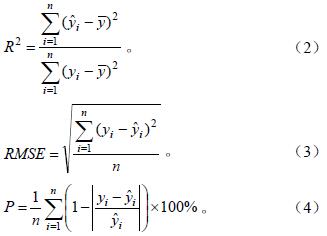作者简介:吴娇娇,硕士研究生通讯作者:舒清态,副教授,博士; E-mail:shuqt@163.com
以普洱市思茅松天然林为研究对象,以 Landsat8 TM影像和 DEM(30 m)数据为信息源,结合 2006年森林资源二类调查小班数据和 2012至 2013年样地实测数据,在 ENVI下提取 14个自变量备选因子( 11个遥感因子、 3个地形因子),在 MATLAB平台下利用 BP神经网络模型建立研究区思茅松天然林生物量估测模型。结果 表明,利用优选训练算法 Ploak-Ribiere,隐含层节点数为 9时效果最佳,得到决定系数 R2=0.85,均方误差 RMSE=14 t/hm2,预估精度 P=74.75%。以像元为单位,分块提取思茅松对应的自变量,利用估测模型得到普洱市思茅松天然林总生物量为 62 185 871.9 t,单位面积生物量为 51.06 t/hm2。
Taking the biomass of Simao pine,(Pinus kesiya var. langbianensis)in Puer county as the research target, Landsat TM 8 images, DEM (resolution: 30 meters), the forest resources inventory data in 2006 and the ground sample data from 2012-2013 as the data source. The Simao Pine’s distribution image in the study area was extracted by ENVI,and 14 factors ( 11 remote sensing factors, 3 terrain factors) was selected as the alternative variables. By using BP neural networks module in MATLAB, the estimation model of Simao Pine’s biomass of study area was established. The results showed that the best optimal training algorithm was Ploak-Ribiere and the hidden layer’s nodes are 9, R2=0.85, RMSE=14 t/hm2, P=74.75%. %,and the predicted total biomass of Simao pine was 62 185 871.9 t, the per-unit area’s biomass was 51.06 t/hm2 in Puer county by taking the pixel as unit and extracting the independent variable factors.

 (S为隐层节点数; j、k分别为输入层和输出层节点数; l取 1~ 10 之间的整数)来确定取值范围。在本文中采用该方法寻找最佳隐含层节点数。
(S为隐层节点数; j、k分别为输入层和输出层节点数; l取 1~ 10 之间的整数)来确定取值范围。在本文中采用该方法寻找最佳隐含层节点数。 









 在 [5,15]上依次取值。见
在 [5,15]上依次取值。见

